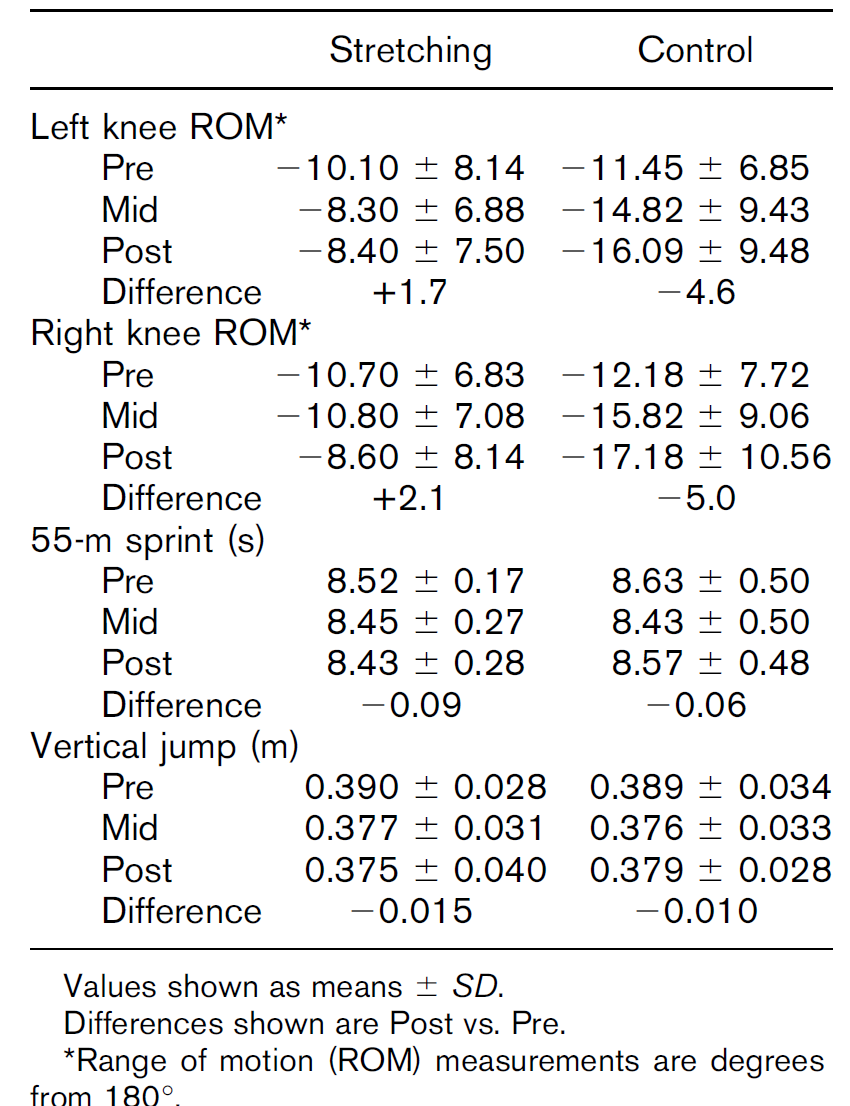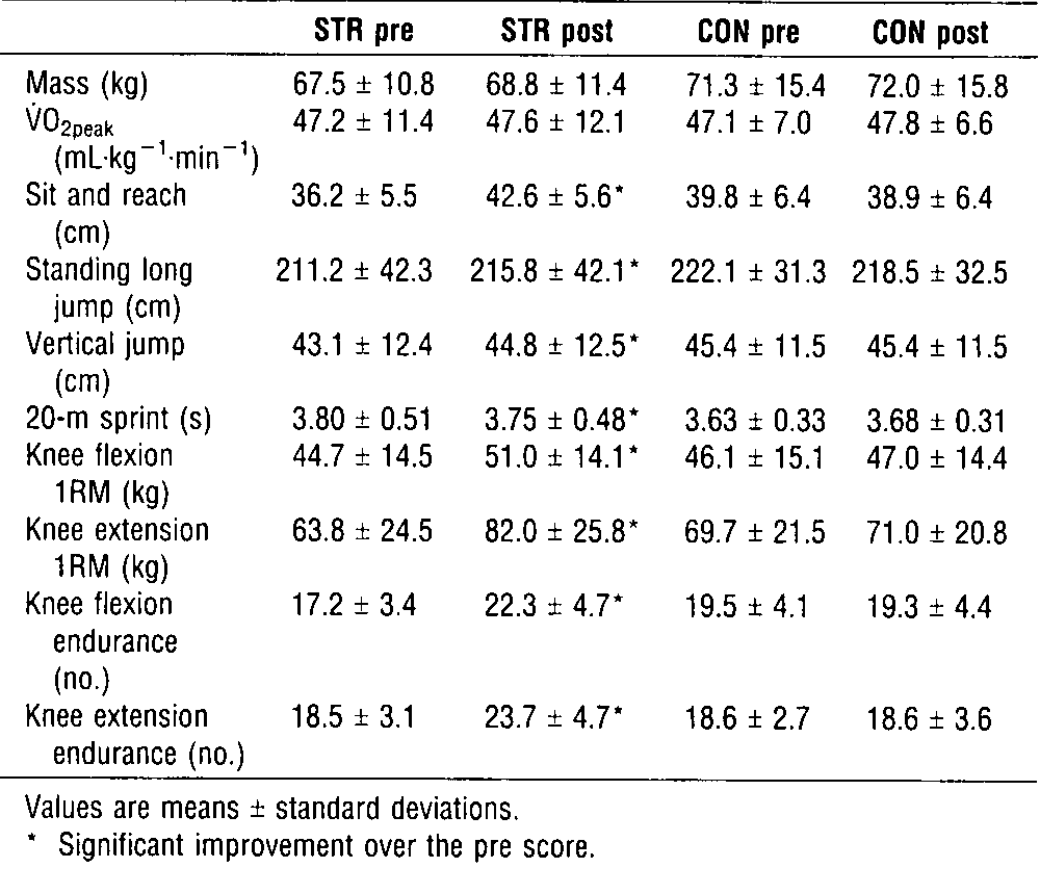Jackie Haffey and Matt Ballman
Have you ever wondered why stretching was always emphasized so heavily in gym classes growing up? Stretching is something that has been coupled with exercise all of our lives. Growing up we are taught to stretch before and after exercise in order to help prevent injury, promote recovery, and enhance your overall performance, but does it actually work? There are professional athletes out there who undergo strict training regimens that involve lots of stretching, but still manage to have career altering injuries like tearing their ACL. There are many athletes who are out there that are very talented but almost never stretch before or after a workout. On the flipside, there are many professional athletes out there that vow that stretching helps them extend their careers and improve recovery. In the NBA, yoga has become a common practice among players doing all that they can in order to help their bodies sustain their elite level of play and handle the rigors of playing in an 82 game season. Arguably the best player of all time Lebron James practices yoga regularly [6]. He even attributes it to helping him extend his career and play at a high level for as long as he has [6]. So does stretching actually help people perform better or avoid injury or is it all just a myth?
For a long time, stretching was highly recommended with little evidence to support it. Now studies are showing that acute stretching before exercise can actually be harmful as discussed in the previous blog post, “Holding Your Stretch is Holding You Back”. So what is evidence saying about chronic stretching?When discussing effects of chronic stretching, it is referring to long term effects of consistent stretching. People normally associate this with increasing flexibility, or joint range of motion (ROM). The American College of Sports Medicine (ACSM) has recommendations for maintaining flexibility. A study was done in 2010 to support the ACSMs advice specifically for hip flexion [5]. There was a significant improvement in ROM for all stretching groups and a decrease for the control group [5]. The paper did mention its own limitation in only studying one muscle group, saying its findings should not be generalized to any muscles in the body. Another limitation was that the participants could not start a new or increase intensity of an existing exercise program during the study [5]. This may have allowed the collected data to have less noise but it may not accurately translate to real world scenarios as many athletes aim to increase workout intensity or switch up their workout programs. So with the knowledge that chronic stretching can increase ROM, how does it affect performance?

Table 2. Data from a study on D3 athletes showing no difference between stretching and control groups.
A study completed in 2007 had the goal of determining the effects of chronic stretching on specific exercise performances. Performed on relatively inactive people, the study lasted eight weeks long and tested whether stretching had an impact on power, strength, and endurance in the lower body by using various exercises according to each fitness category [1]. The, “stretching,” or experimental group showed significant improvement in all categories whereas the control group showed no improvements [1]. On the contrary there was a study completed on hamstring performance in female D3 athletes [4]. Six weeks long, this study found there to be no significant difference in power performance in either the stretching and control groups [4]. So maybe stretching just has an effect on sedentary individuals?
Another aspect of stretching that is renowned is its ability to decrease the body’s risk of injury. A study completed on patients with chronic neck pain had subjects undergo 6 weeks of stretching and/or global posture reeducation twice a week during that time [2]. After the study was completed it was found that both the stretching and posture reeducation groups had significant reduction in pain [2]. However, this study also lacked a control group so it is hard to tell whether the reduction in pain was at the result of a placebo effect. On the opposite end, a large scale literature search evaluated over 90 different studies trying to determine whether there was sufficient evidence that stretching does indeed reduce the risk of injury [3]. After reviewing a large amount of literature it was found that it cannot be determined whether stretching reduces the risk of injury [3]. In fact, it found it is more than likely to not have anything to do with injury risk because stretching depends on different characteristics of muscles than characteristics that rely on eccentric movement which is often the movement where non-contact injuries occur [3].
After reviewing the above literature and evaluating research that studied chronic stretching it really cannot be determined whether chronic stretching is essential in order to maintain performance and prevent injury. All of the studies observed either could not find data to support the fact that stretching indeed plays a pivotal role in exercise or the study was to limited in its structure to provide accurate results. The biggest problem was how the term, “chronic,” is defined. The longest study that we found was only 12 weeks long which can hardly represent professional athletes who have been stretching throughout their entire lives. Without longer studies it’s hard to determine anything about chronic stretching because there’s simply not enough data out there. Although stretching cannot be supported with factual scientific data it is hard to argue that it can’t hurt to stretch after exercise. With successful athletes swearing by its benefits why could it hurt to spend a little time after you exercise to stretch out? Even if it’s just for peace of mind stretching does have at least some benefit after all.
Questions to Consider:
In what populations is it most important to determine the effects of stretching?
Since most current studies are on the lower extremities, should studies been done on the effect of stretching the upper extremities ?
What would be your personal definition of chronic? Do you think 6 or 8 or 12 weeks studies count towards data for the effects of chronic stretching?
References and Further Readings:
- Kokkonen ’ J, Nelson AG, Eldredge C, et al. Chronic Static Stretching Improves Exercise Performance Chronic Static Stretching Improves Exercise. Performance Med Sci Sport Exerc. 2007;39(10):1825-1831. doi:10.1249/mss.0b013e3181238a2b.
- Aure OF, Hoel Nilsen J, Vasseljen O. Manual Therapy and Exercise Therapy in Patients With Chronic Low Back Pain. Spine (Phila Pa 1976). 2003;28(6):525-531. doi:10.1097/01.BRS.0000049921.04200.A6.
- Shrier I. Stretching before exercise does not reduce the risk of local muscle injury: a critical review of the clinical and basic science literature. Clin J Sport Med. 1999;9(4):221-227. https://www.colorado.edu/intphys/iphy3700/shrierCritRev.pdf. Accessed May 7, 2018.
- Bazett-Jones DM, Gibson MH, McBride JM. Sprint and Vertical Jump Performances Are Not Affected by Six Weeks of Static Hamstring Stretching. J Strength Cond Res. 2008;22(1):25-31. doi:10.1519/JSC.0b013e31815f99a4.
- Sainz de Baranda P, Ayala F. Chronic Flexibility Improvement After 12 Week of Stretching Program Utilizing the ACSM Recommendations: Hamstring Flexibility. Int J Sports Med. 2010;31(6):389-396. doi:10.1055/s-0030-1249082.
- Toland S. The Rise of Yoga in the NBA and Other Pro Sports | SI.com. Sports Illustrated. https://www.si.com/edge/2014/06/27/rise-yoga-nba-and-other-pro-sports. Published 2014. Accessed May 7, 2018.


